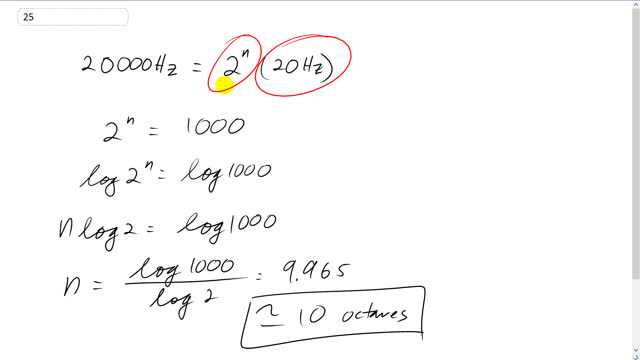
Estimate the number of octaves in the human audible range, 20 Hz to 20 kHz.

In order to watch this solution you need to have a subscription.
This is Giancoli Answers with Mr. Dychko. An octave is a doubling of frequency. So, with the low end of the frequency that we can hear is 20 hertz. We're gonna multiply that by 2, some unknown number of times and eventually that'll make 20,000 hertz, the upper range of our range of hearing. So, 2 to the n means 2 times itself some unknown number of times, you know, n times here. And we can solve for using logarithms. First we'll divide both sides by 20. And that gives 2 to the n makes 1,000. And take the logarithm of both sides and you get log of 2 to the n equals log 1,000. And one of the rules for logarithms is that log of some number to an exponent equals that exponent multiplied by log of the base, which is 2 there. So, and then divide both sides by log 2. And you have n is log 1,000 divided by log 2 which is about 10 octaves.